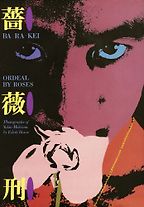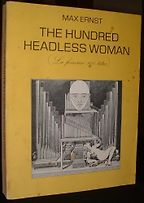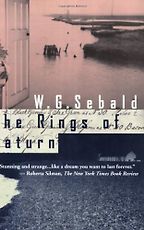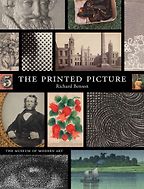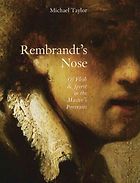Do you publish art books or make them?
I publish art books, but that also means I’m very involved in making them. I work closely with the book designers, the writers, the artists – everybody who’s part of making an art book come into being.
And how did you come to it?
I had just finished my PhD and was working as an archivist in the New York University library, which included a collection of papers which had belonged to this guy who had been an avant garde theatre agent, promoter and producer. He collected everything from taxi stubs to amazing theatre posters. I made a small exhibition out of the collection, went on to do an internship at a place called Aperture that published art books, started writing about them in magazines, and then met this South African publisher called David Krut. We went out for lunch and he suggested there might be some free lance work for me back in Johannesburg. By the end of lunch he’d asked me to run the publishing arm of his company.
So in at the deep end?
Yes.
Tell me about your first book, Eikoh Hosoe’s, Ba Ra Kei/Ordeal by Roses.
It’s a beautiful book, originally published in the mid sixties. It arose out of this very unusual collaboration between the photographer, Eikoh Hosoe, and the Japanese writer Yukio Mishima. Hosoe had been commissioned to do a portrait of Mishima for a collection of essays. Well the portrait was one thing, but Hosoe took a lot of other photographs. They became a document of Mishima’s fascination with his own body. These two men produced an extraordinary book together, but on the eve of its publication, Mishima – who was obsessed with purity and the way of the Samurai – committed ritual suicide. Eikoh Hosoe realised subsequently that this book had been part of a testament, a will, a preparation for the suicide. I think Mishima was 38 when he did it.
Why did he kill himself?
It’s difficult to say. He had an odd childhood – he was raised by his grandmother. He was very isolated as a child. Later he was a very prolific writer. He wrote over 40 novels, he was an actor, he wrote drama, he wrote essays. But he was also obsessed with his own physicality. He was a weight trainer, he did sword fighting – he even established a private army.
A real army?
Yeah. He tried to bring off a coup in Japan. He tried to depose the military government in order to re-establish the old imperial government and emperor. But of course he completely failed and this is more or less at the time of his suicide. He did the suicide by having one of his young protégées behead him with a sword.
Ouch.
So this book is deeply erotic – fascinating. The photography’s extraordinary. There are a couple of other remarkable characters related to this book that I don’t have time to go into now. I’m interested in a number of Japanese photographers, but I first encountered Mishima when I read one of his short stories in a collection and it was a story about ritual suicide: an army officer who had dishonoured himself and who impaled himself on his sword. And his wife has to commit suicide with him.
A phenomenal narcissist.
A very conservative man.
So what next?
Let’s talk about The Hundred Headless Woman. I’m interested in the connection between photography and print-making – engravings – because somewhere way back when photography took the place of print-making as the principle medium for illustration.
In the newspapers?
In the newspapers. A hundred and fifty years ago engraving was the way you illustrated the world. So these days, if you read the news, you’re looking at photography. But in any case, this book, “The Hundred Headless Woman” by Max Ernst was published in 1929 and it’s a classic surrealist book. It almost completely incomprehensible, but it’s absolutely brilliant! It’s made up of these collages which he culled from 18th and 19th century story books. It’s sort of like an early graphic novel but in a completely whacked out style. You have an engraving of a bird and a bird’s claw grasping a picture and the caption is, “Loplop the swallow returns”. There’s another engraving of a woman being abducted and carried off in a carriage and the caption here is “nothing will stop this passing smile which accompanies heterosexual crime.”
So a bit of raunchy post-war Dada?
Post-First World War, yes, originally published in French. I actually have a first American edition which came out in 1981, translated by Ernst’s wife, Dorothea Tanning. Ernest was married to some interesting women, including Peggy Guggenheim, but Tanning was a surrealist painter and published a couple of novels and poetry. She was also a print maker. She was still making lithographs and etchings in the mid 1990’s.
Why’s it called A Hundred Headless Woman?
Well the French is “La Femme 100 Têtes” where the “100” would be “cent” which sounds like “sans” – which of course means “without”. So I guess The Hundred Headless Woman teases that pun apart. And there are a lot of women in this strange book!
What’s your third book?
I think we should go to Rembrandt’s Nose.
Another weird title.
Yes. This is quite a small book which is about Rembrandt’s representation of his own nose. At least initially. But the bigger story is about the way in which Rembrandt renders flesh. The sense of flesh, in his prints and in his oil paintings. I love the physical qualities of this book. It’s just beautifully made, on creamy uncoated paper. The reproductions of Rembrandt’s works are exquisite – really beautiful. They’re not full colour, they’re in two tone – sepia – which works very well indeed. For its size, the book’s very generous with the way these images are presented. It gives them a full page each. And you know a small book often concentrates attention in a way a bigger book can’t. It’s like a whisper and it’s wonderfully written. But again for me the fascination is also in the print-making. Rembrandt has such powerful influence on print-makers all the way through from the 17th century to the present. My own work
Because I suppose you’re involved with print-making quite a lot?
All the time. My involvement with printing goes from being associated with a print-making workshop where prints are pain-stakingly made of copper plates, one at a time on a hand operated press, all the way through to being on the floor of a factory where you’ve got a ten colour Heidelberg printer running a million sheets a year.
Number four.
Book number four is not exactly an art book, but it contains pictures. It’s by W G Sebald – The Rings of Saturn. Sebald is interesting because he published all of his books with photographs in them, and this one is interesting because it’s kind a Wordsworthian walking trip. The character, who is and is not Sebald, walks along the east coast of England and finds odd places, odd people, odd things. It’s just a rambling narrative of geography, literature and objects and it’s punctuated, as are all of his books, by these odd little photographs, which often don’t appear to bear any relationship to what’s in the text at all. I think Sebald was actually sued a couple of times for copyright infringement, because he just photographs things out of books and then sticks them in his novels. They’re not good reproductions. They’re quite small, black and white, often blurred – like bad photocopies or pictures out of a newspaper. He breaks all the rules. He just sticks a picture in the middle of the page. At times they illustrate what he’s talking about, but just as often they don’t. They add another layer, but sometimes it’s hard to say exactly what that layer actually means. As a novelist, I think he’s spawned a whole industry which theorises the relationship of pictures to words.
Your last book is Richard Benson’s The Printed Picture, published by the Museum of Modern Art in New York. A good book to end on.
I think so. It’s a catalogue of an exhibition which I saw in January at MoMA. It was about print-making and photography – the evolution of the printed object, right from early cave paintings all the way through to the most sophisticated print-making. It looks at photography and traditional print-making – etching and so on – but it treats them all as a continuous narrative. It had none of the sensationalism of many of MoMA’s big shows. It was very scholarly, discreet, small, well-illustrated show. You walked round and you needed to look and read to understand what was going on.
Get the weekly Five Books newsletter
A disgrace!
Yes! You couldn’t just sit in the middle of the room. But the book’s wonderful – the physical structure of it. It’s a very sturdy book; about an inch thick, about A4 or US Legal in size. What Benson does is, he starts from the beginning and on the left he has a column of text and on the right he has one or two really beautiful pictures. He starts with cave painting, then he goes to relief printing, and under that heading he’s got wood cuts. Very accessible, very readable, beautiful. You can dip into this book anywhere. I’m opening it up now at colour carbon printing. There’s a gorgeous print of a flower on the right side and three paragraphs on the left explaining what colour carbon printing is. As a book it makes no extravagant claims. It’s quite modest and it has a real honesty to it. It’s a history of printing, but it’s also a beautiful example of what the history of printing has made possible.
Five Books aims to keep its book recommendations and interviews up to date. If you are the interviewee and would like to update your choice of books (or even just what you say about them) please email us at [email protected]
Five Books interviews are expensive to produce. If you've enjoyed this interview, please support us by donating a small amount.
